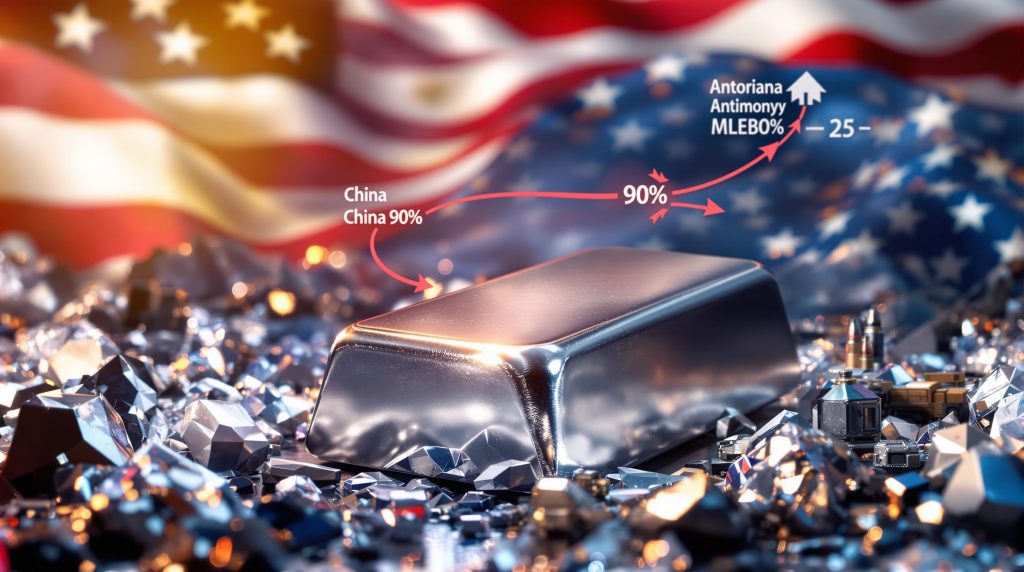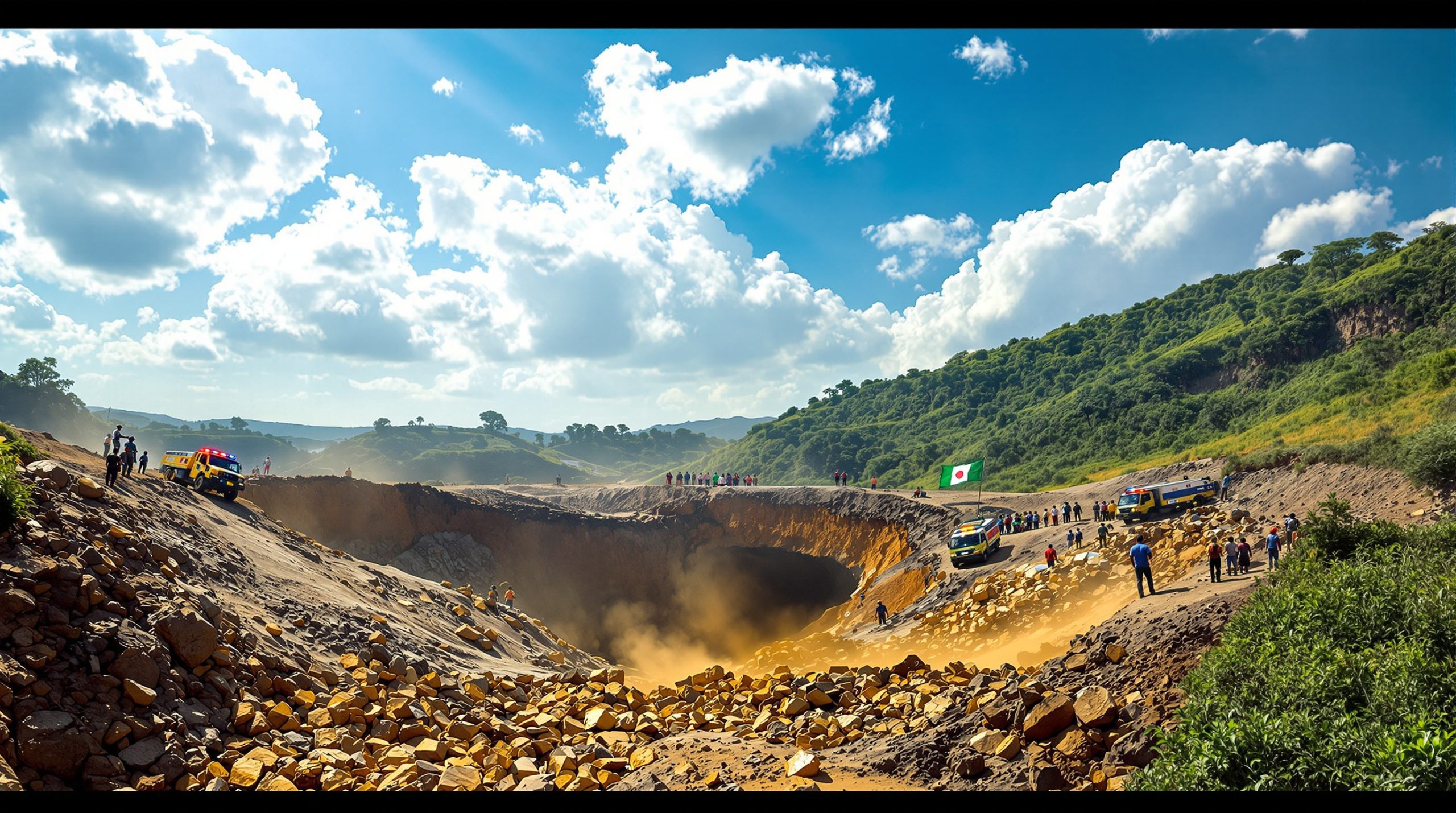Why is Antimony Critical to US National Security?
Antimony serves as an essential component in numerous defense applications, making it a strategically vital resource for military operations and national security. This semi-metallic element possesses unique properties that make it virtually irreplaceable in certain applications, creating a strategic vulnerability when domestic supply chains are compromised.
Strategic Applications in Defense
The military relies on antimony for several critical applications that directly impact combat readiness and effectiveness:
- Ammunition primers and propellants
- High-strength alloys for military vehicles and equipment
- Flame retardants for military vehicles and aircraft
- Specialized batteries for tactical field equipment
- Semiconductor components in advanced defense electronics
These applications represent just a portion of antimony's military significance, with ongoing research continually discovering new defense-related uses for this versatile element.
Current Supply Chain Vulnerabilities
The United States faces significant challenges in securing reliable antimony supplies. China currently controls over 90% of global antimony production and processing capabilities, creating a dangerous dependency for U.S. defense manufacturers. This concentration of supply presents a strategic vulnerability that could potentially compromise military readiness during international tensions.
Domestic production has been minimal in recent decades, with most U.S. antimony smelting operations closing due to economic pressures and competition from cheaper Chinese imports. This has left the defense industrial base dependent on potentially unreliable foreign sources for a material deemed essential to national security.
What Does the $245M USAC Contract Include?
The United States Antimony Corporation (USAC) has secured a landmark $245 million defense contract with the U.S. Defense Logistics Agency (DLA), establishing itself as the exclusive supplier of antimony metal ingots for the National Defense Stockpile over a five-year period.
Contract Terms and Delivery Requirements
The agreement is structured as an indefinite delivery indefinite quantity (IDIQ) contract, providing flexibility for the government to adjust order volumes based on strategic needs. The contract specifies antimony metal ingots that meet rigorous military specifications, with deliveries scheduled to begin immediately following the September 2025 contract announcement.
This sole-source agreement designates USAC as the exclusive provider of antimony to the Defense Logistics Agency for stockpile purposes, reflecting the government's confidence in the company's unique capabilities and infrastructure.
Timeline for Implementation
The five-year contract timeframe (2025-2030) provides a stable framework for both the government and USAC to plan long-term production and stockpile strategies. Initial deliveries under the contract were expected within days of the September 2025 announcement, with subsequent shipments scheduled throughout the contract duration.
This extended timeline also allows USAC to implement necessary capacity expansions and facility enhancements to meet the increased production demands, with major infrastructure improvements expected to be completed by late 2026.
Quality Specifications for Antimony Ingots
The contract requires antimony metal ingots that meet exacting military standards for purity and quality. Defense applications typically require higher-grade antimony than commercial uses, with stricter limits on impurities that could compromise performance in critical applications.
These specifications create additional challenges for suppliers, as many commercially available antimony sources worldwide may not meet the stringent requirements for defense applications. USAC has expressed concerns that many alternative sources may not meet U.S. military standards, highlighting the specialized nature of defense-grade antimony production.
How Does This Contract Transform USAC's Business Operations?
The $245 million defense contract represents a transformative opportunity for USAC, potentially increasing its annual revenue by several multiples and fundamentally altering its business trajectory.
Financial Impact Analysis
The contract's value dramatically eclipses USAC's historical business volume. For perspective, USAC reported total 2024 revenue of just $14.9 million, making this defense contract approximately 16 times larger than its previous annual business. Even spread across the five-year contract duration, the annual value of approximately $49 million represents more than triple the company's prior annual revenue.
This financial transformation provides USAC with unprecedented resources to invest in facility modernization, workforce development, and mining operations. The stable, long-term nature of government contracts also improves the company's ability to secure financing for capital improvements.
Production Capacity Expansion Plans
To fulfill its contractual obligations, USAC is implementing a multi-faceted expansion strategy:
- Partnering with WSP USA to enhance the Thompson Falls, Montana smelting facility
- Planning for a reported 500% capacity expansion targeted for completion by year-end 2026
- Modernizing equipment and processes to improve efficiency and output quality
- Developing infrastructure to process multiple ore types from diverse global sources
These expansion efforts represent the most significant capital investment in North American antimony processing capabilities in decades, potentially reversing the long-term decline in domestic production capacity.
Workforce and Expertise Development
USAC's chairman and CEO, Gary Evans, emphasized the company's unique technical expertise: "USAC has some of the most experienced antimony chemists/metallurgists and other professionals on its team in the global landscape. This is the kind of knowledge that is only gained through decades of execution and know-how."
The contract will likely accelerate the company's workforce development efforts, potentially creating specialized metallurgical jobs and preserving critical technical knowledge that has become increasingly rare outside of China. This expertise development aspect represents an important secondary benefit for U.S. industrial capacity beyond the immediate antimony supply.
Where Will USAC Source Antimony for This Contract?
Meeting the substantial volume requirements of the defense contract requires USAC to implement a diversified sourcing strategy that balances domestic and international supply channels.
Domestic Mining Operations
USAC is actively developing its mineral holdings in Alaska and Montana to increase domestic antimony production. Recent mining operations in Alaska have revealed promising high-grade antimony deposits that could significantly strengthen domestic supply chains. The company has indicated these Alaska deposits contain antimony concentrations substantially higher than global averages, making them economically viable despite higher U.S. production costs.
Developing these domestic resources represents a longer-term strategy that could eventually reduce reliance on imported ores, though full development timelines extend beyond the initial contract period.
Global Supply Chain Partnerships
While domestic production expands, USAC will continue relying on international ore sources to meet immediate contract requirements. The company has established relationships with suppliers in multiple countries to diversify supply risks and ensure consistent ore availability.
This balanced approach recognizes that complete domestic self-sufficiency remains years away, requiring careful management of international supply relationships during the transition period. The contract's five-year duration provides USAC time to gradually shift toward greater domestic sourcing as operations in Alaska and Montana mature.
Quality Control Challenges
USAC has expressed concerns about the quality of antimony from alternative sources, noting that many available ores worldwide may not meet U.S. military standards. This quality assurance challenge further reinforces the strategic importance of maintaining domestic processing capabilities with proven expertise in handling diverse ore types.
The company's decades of experience in antimony metallurgy provides a technical foundation for addressing these quality challenges, with specialized knowledge in processing methods that can transform varying ore types into defense-grade antimony ingots.
How Does This Contract Address China's Market Dominance?
The defense contract with USAC represents a significant step in reducing America's dependency on foreign antimony sources, particularly China, which currently controls over 90% of global antimony production and processing.
Breaking the 90% Chinese Market Control
China's dominance in the antimony market has developed over decades as Western producers gradually ceased operations due to economic pressures and environmental regulations. This concentration presents significant risks to U.S. national security, especially as U.S.-China relations have become increasingly complex and occasionally contentious.
The USAC contract directly challenges this dominance by reinvigorating domestic production capabilities and creating a stable market for North American antimony. While the contract alone won't immediately shift global market dynamics, it establishes a foundation for reducing Chinese leverage over this strategic material.
Comparison of US vs. Chinese Quality Standards
U.S. military specifications for antimony typically exceed commercial standards used in many Chinese applications. These higher quality requirements create additional challenges for defense supply chains but also provide opportunities for differentiation by domestic producers like USAC who can consistently meet these standards.
The quality gap between U.S. military-grade antimony and standard commercial products highlights why simple market purchases from global suppliers may not adequately address defense needs, necessitating dedicated supply arrangements with qualified producers.
Strategic Implications for Trade Relations
The contract aligns with broader US mineral production policy efforts to strengthen domestic supply chains for strategic materials and reduce reliance on potentially adversarial nations for critical resources. This push for greater self-sufficiency in strategic minerals reflects growing concerns about the national security implications of resource dependencies.
While the contract itself represents a commercial transaction, its broader context includes significant geopolitical dimensions related to U.S.-China competition and the security of defense supply chains. The emphasis on domestic production capability demonstrates a strategic shift toward prioritizing supply chain security over pure economic efficiency.
What Infrastructure Makes USAC Uniquely Positioned for This Contract?
USAC possesses unique assets and capabilities that justified its selection for this sole-source contract, most notably its position as the only antimony processor in North America with extensive metallurgical expertise.
North America's Only Antimony Smelting Facilities
USAC operates the only two antimony smelters in North America, giving it a unique competitive advantage that justified the sole-source contract award. These facilities in Montana have been processing antimony for decades, maintaining specialized knowledge that has become increasingly rare outside of China.
This infrastructure represents a critical national asset that would be difficult and time-consuming to replicate, making USAC's existing operations particularly valuable from a strategic standpoint. The facilities' continued operation has preserved vital industrial capabilities that would otherwise have disappeared entirely from North America.
Technical Expertise and Metallurgical Capabilities
The company possesses specialized knowledge in antimony chemistry and metallurgy that has been developed through decades of operational experience. This expertise encompasses the complex processes required to transform various ore types into high-purity antimony metal that meets stringent military specifications.
USAC's chairman emphasized this unique position: "USAC has some of the most experienced antimony chemists/metallurgists and other professionals on its team in the global landscape." This technical knowledge represents intellectual capital that would be difficult to reconstruct if lost.
The WSP USA Partnership for Facility Enhancement
To meet the contract's volume requirements, USAC has formed a strategic antimony loan partnership with engineering firm WSP USA to enhance its smelting operations at Thompson Falls, Montana. This collaboration brings additional technical expertise and project management capabilities to USAC's expansion efforts.
The partnership demonstrates how the defense contract is catalyzing broader industrial development beyond USAC itself, creating ripple effects in related engineering and construction sectors as facilities are upgraded and expanded.
How Does This Contract Fit Into Broader US Critical Minerals Strategy?
This contract represents a concrete implementation of evolving U.S. policy priorities regarding critical minerals security and defense industrial base resilience.
Alignment with Defense Industrial Base Priorities
The antimony contract aligns with broader U.S. government initiatives to strengthen domestic supply chains for strategic reserve initiative materials. Recent policy directives have emphasized:
- Rebuilding domestic processing capabilities for strategic materials
- Reducing dependence on potentially unreliable foreign sources
- Ensuring quality control for defense-critical materials
- Creating long-term supply stability for strategic stockpiles
The focus on antimony reflects growing concerns about energy transition minerals dependencies and their implications for national security and industrial resilience. While antimony has received less public attention than elements like rare earth metals, its strategic importance has been increasingly recognized in defense planning circles.
Comparison with Other Critical Mineral Initiatives
The $245 million antimony contract represents one of the larger recent investments in rebuilding the National Defense Stockpile, which has been depleted over decades. It signals a renewed focus on Australia's critical minerals security after years of stockpile drawdowns and limited investment in domestic production capabilities.
Similar initiatives are underway for other strategic materials, though antimony represents a particularly challenging case due to the extreme concentration of global production in China and the limited remaining processing infrastructure in Western nations.
Long-term Implications for US Mineral Security
This contract represents a significant step toward reestablishing domestic supply chains for critical minerals, but challenges remain in creating a fully resilient antimony supply ecosystem. The five-year timeframe provides stability for initial investments, but longer-term mineral security will require:
- Continued exploration and development of domestic antimony deposits
- Investment in advanced processing technologies
- Workforce development to maintain specialized metallurgical expertise
- Diversification of global supply relationships beyond China
The contract effectively buys time for these longer-term initiatives to develop, providing immediate supply security while laying groundwork for more sustainable domestic production capabilities.
What Challenges Must USAC Overcome to Fulfill This Contract?
Despite its unique position, USAC faces significant challenges in scaling operations to meet the substantial volume requirements of the defense contract.
Production Capacity Limitations
USAC's existing facilities, while uniquely positioned as the only North American antimony smelters, have operated at relatively modest capacity levels in recent years. The company's reported 2024 revenue of $14.9 million indicates production volumes well below what will be required under the new contract.
The planned 500% capacity expansion represents an ambitious target that will require careful project management and substantial capital investment. Achieving this growth within the contract timeframe presents technical and logistical challenges that will test the company's operational capabilities.
Environmental Compliance Considerations
Antimony processing presents environmental challenges including potential air emissions and waste management concerns. USAC's domestic operations must adhere to U.S. environmental regulations, which are typically more stringent than those in competing producer countries.
Balancing rapid production expansion with environmental compliance requirements will require sophisticated engineering solutions and close coordination with regulatory authorities. The partnership with WSP USA likely includes environmental engineering expertise to address these challenges.
Technical Workforce Development Needs
The specialized nature of antimony metallurgy requires technical expertise that has become increasingly rare in the United States as domestic production declined. While USAC retains core technical staff with critical knowledge, expanding operations will require training additional personnel in specialized skills.
This workforce development challenge extends beyond USAC itself to the broader question of preserving strategic technical capabilities within the U.S. industrial base. The contract provides an opportunity to rebuild this expertise, but developing a new generation of specialized metallurgists requires time and educational resources.
FAQ: Key Questions About the Antimony Defense Contract
What makes antimony irreplaceable in defense applications?
Antimony possesses a unique combination of properties that make it difficult to substitute in many critical applications:
- In ammunition primers, it creates compounds that are sensitive to impact yet stable during storage
- As a flame retardant, it forms synergistic combinations with other elements that efficiently suppress combustion
- In specialized alloys, it provides hardening properties while maintaining other desired characteristics
- For battery applications, it enables performance characteristics difficult to achieve with alternative materials
These specialized properties make finding substitutes particularly challenging for defense applications where performance requirements are most stringent and reliability is paramount.
How does this contract compare to previous stockpile initiatives?
The $245 million antimony contract represents a significant shift from previous decades where the National Defense Stockpile was being systematically reduced rather than expanded. From the 1990s through the 2010s, government policy generally favored selling off stockpiled materials rather than acquiring new supplies.
This contract signals a reversal of that trend, reflecting renewed concerns about supply chain vulnerabilities and recognition that market mechanisms alone may not adequately protect strategic material supplies. The size and duration of the antimony contract indicate a more substantial commitment to stockpile rebuilding than seen in recent decades.
What environmental considerations impact antimony production?
Antimony processing involves several environmental considerations:
- Potential air emissions requiring sophisticated pollution control systems
- Waste management challenges for processing residues
- Water quality protection measures for processing facilities
- Energy intensity of smelting operations
USAC's operations must comply with U.S. environmental regulations, which typically impose stricter controls than those in some competing producer countries. While these requirements may increase production costs, they also ensure more responsible production practices and reduce community impacts.
How might this contract affect global antimony markets?
The defense contract represents a significant new source of demand in the global antimony market, potentially influencing prices and production decisions worldwide. Key market impacts may include:
- Upward pressure on antimony prices, particularly for higher-grade materials
- Increased incentives for exploration and development of new antimony resources
- Potential strategic responses from Chinese producers seeking to maintain market control
- Greater price differentiation between standard commercial grades and defense-quality antimony
While the contract volume alone won't immediately transform global market dynamics, it signals government support for domestic production that could influence long-term investment decisions throughout the antimony supply chain.
What's the Outlook for US Antimony Production Beyond This Contract?
While the defense contract provides immediate stability for USAC and the domestic antimony industry, longer-term prospects depend on several factors beyond the initial five-year agreement.
Domestic Resource Development Potential
The United States possesses significant antimony resources that remain largely undeveloped, particularly in Alaska, Idaho, Montana, and Nevada. USAC's recent operations in Alaska have revealed promising high-grade deposits that could support expanded domestic production if fully developed.
The economic viability of these resources depends on several factors:
- Sustained antimony prices at levels that justify domestic production costs
- Continued policy support for strategic mineral development
- Regulatory frameworks that enable responsible resource development
- Infrastructure investments that reduce production and transportation costs
Successful development of these domestic resources could significantly reduce U.S. import dependence beyond the current contract timeframe.
Technology Innovations in Antimony Processing
Technological advancement presents opportunities to improve the economics and environmental performance of domestic antimony production. Potential innovations include:
- More energy-efficient smelting processes that reduce production costs
- Advanced pollution control systems that minimize environmental impacts
- Recovery methods for extracting antimony from previously uneconomic sources
- Processing techniques optimized for North American ore characteristics
These technological developments could potentially overcome some of the economic disadvantages that have historically challenged domestic production compared to Chinese operations.
Strategic Positioning for Future Defense Needs
The current contract establishes a foundation for continued government support of domestic antimony production. Future defense needs will likely continue prioritizing secure supply chains for strategic materials, creating opportunities for sustained partnership between USAC and defense agencies.
This strategic realignment toward domestic sourcing represents a fundamental shift from previous decades' emphasis on globalized supply chains optimized primarily for cost efficiency. If this policy direction continues, domestic antimony producers should benefit from sustained government interest in maintaining secure supply sources regardless of price differentials with international suppliers.
As global competition for critical minerals intensifies, antimony's strategic importance may continue growing, potentially leading to expanded stockpiling efforts and additional support for domestic production beyond the current contract.
Ready to Capitalise on the Next Major Mineral Discovery?
Stay ahead of the market with Discovery Alert's proprietary Discovery IQ model, which instantly notifies investors of significant ASX mineral discoveries and transforms complex data into actionable insights. Explore our dedicated discoveries page to understand why historic discoveries like antimony can generate substantial returns, and begin your 30-day free trial today.




